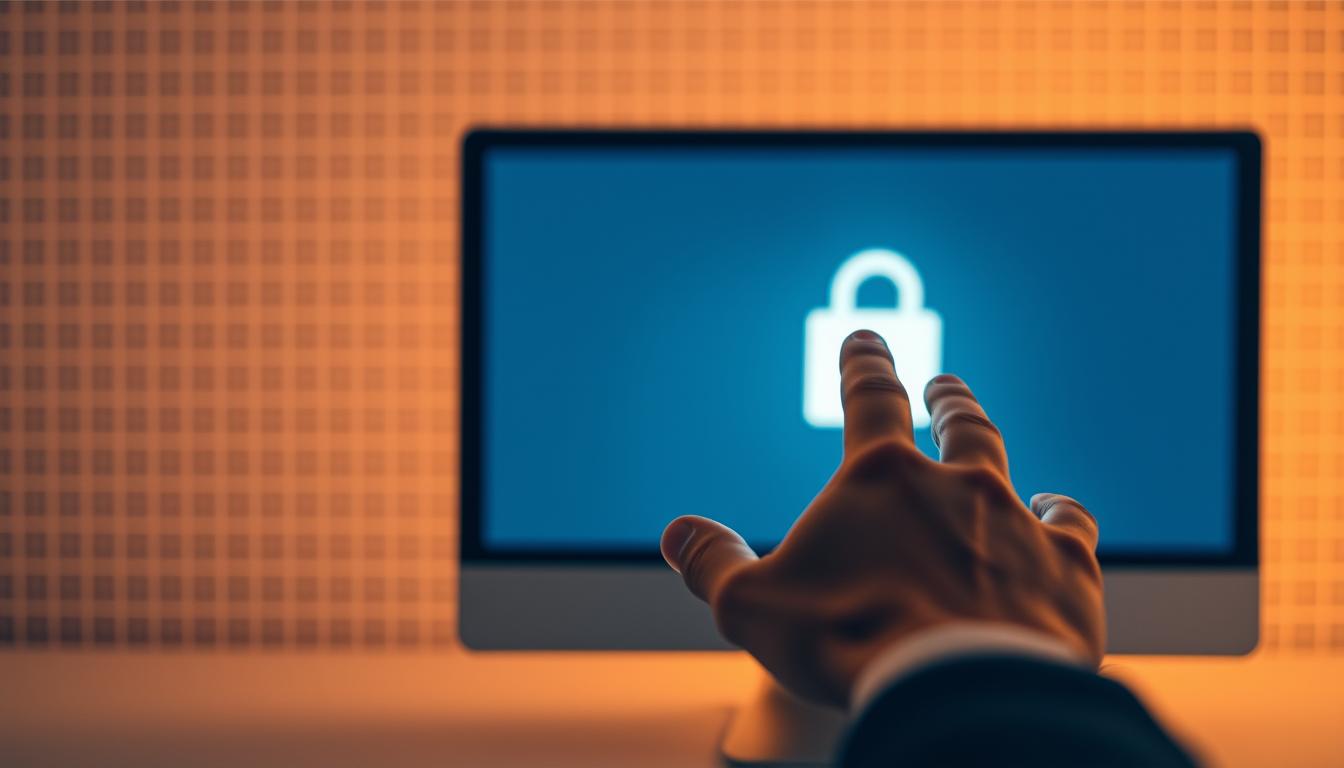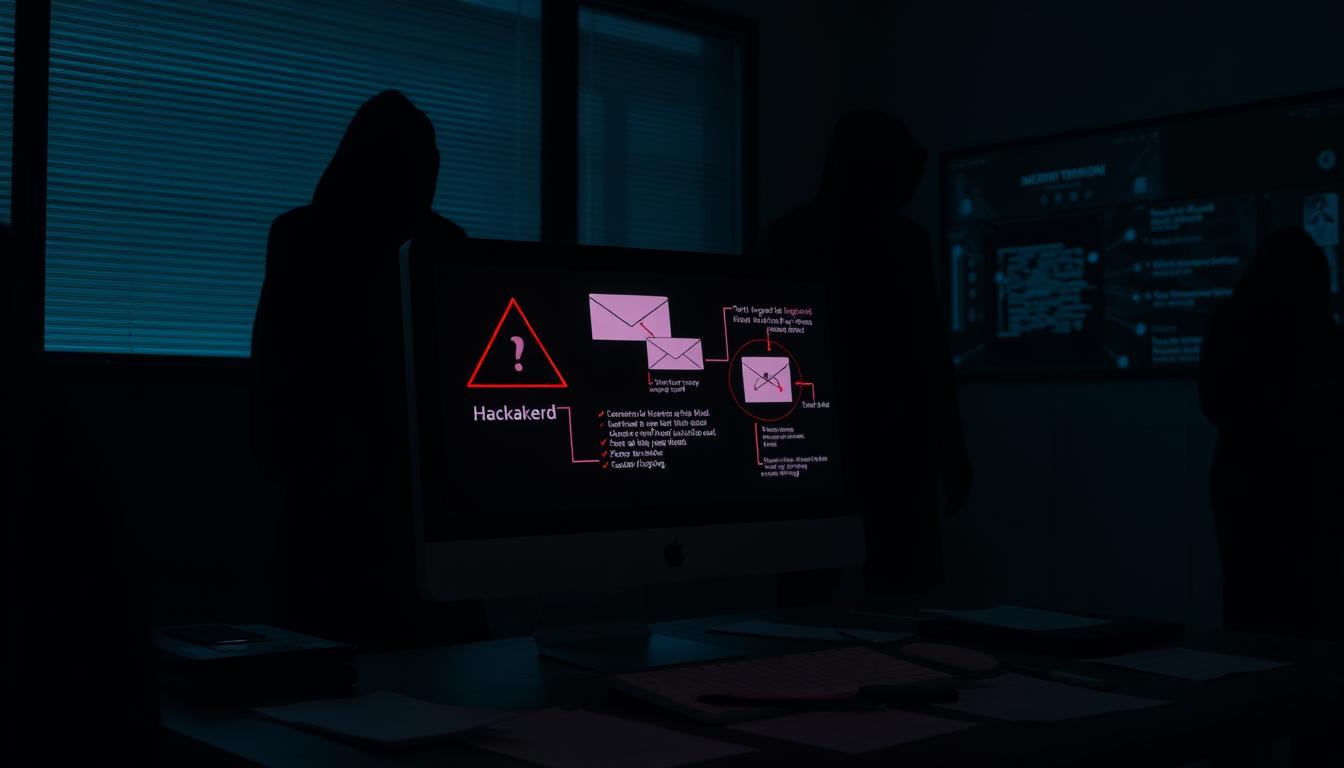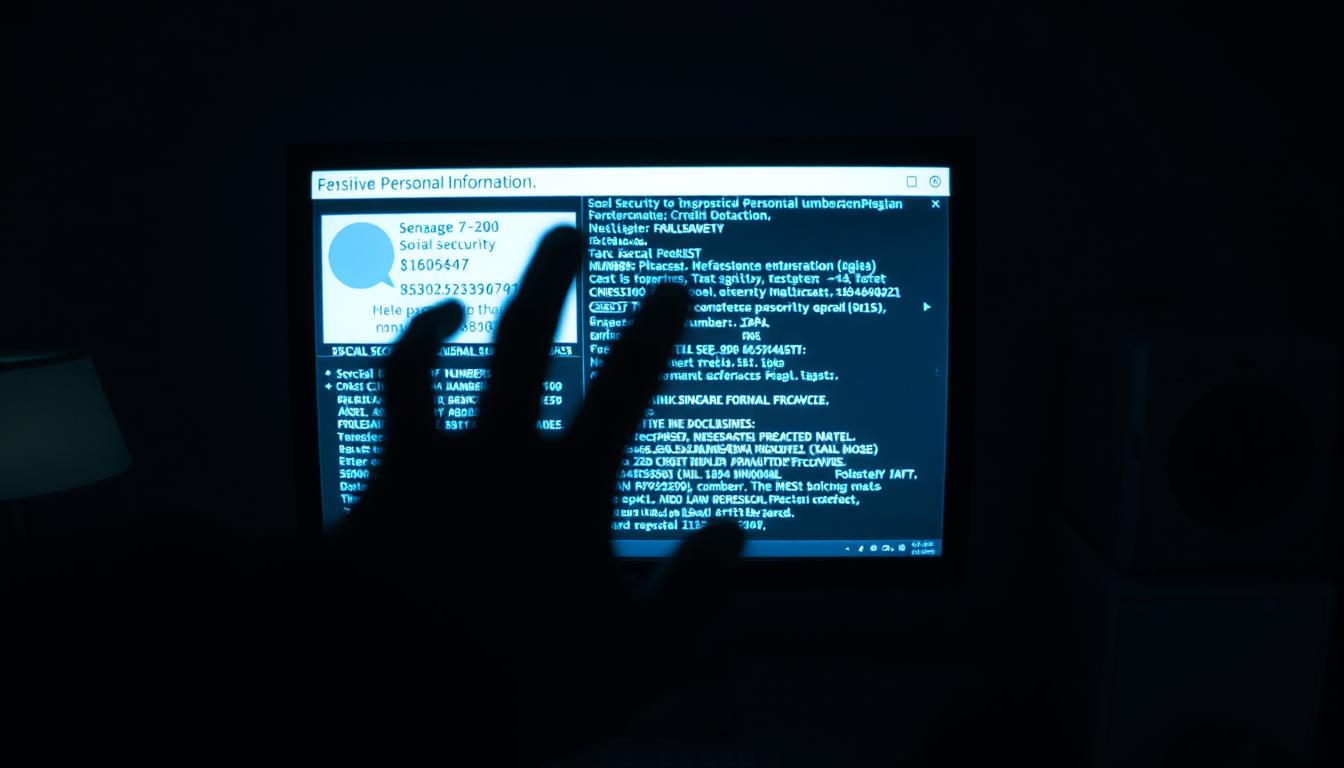In today’s advanced world, information breaches are an enormous risk. They can expose your sensitive information to cyber threats. This could lead to identity theft and financial loss.
It’s important to understand data breaches and how to protect yourself. Millions of people fall victim to online data leaks every year. By knowing the common causes and using the right protection, you can lower your risk.
With the right knowledge and quick action, you can keep your personal information safe. This has never been easier.
Key Takeaways
- Data breaches expose personal information and financial data.
- Knowing the common causes can help you mitigate risks.
- Proactive cyberattack protection is essential for security.
- Strong passwords and two-factor authentication are vital defenses.
- Monitoring account activity can prevent unauthorized access.
- Be aware of phishing scams to further protect your data.
What is a Data Breach?
A data breach happens when someone gets access to private information without permission. This can include things like Social Security numbers, bank details, and personal ID. As more businesses collect and store this data, they become targets for hackers.
It’s important for people to know about data breaches to protect their personal info.
Data breaches can take many forms and have serious effects. For example, they can lead to identity theft, financial loss, and harm to your reputation. Knowing about data breaches helps you see the dangers of having your personal info exposed online.
The Common Causes of Data Breaches
It’s important to know why data breaches happen to protect our personal info. Many things can lead to these incidents, putting both companies and people at risk.
Hacking Incidents
Hacking is a big reason for data breaches. Hackers use smart ways to get into systems and steal data. They might use old software, malware, or tricks to get what they want.
Weak Passwords and Credential Stuffing
Using weak passwords is a big problem. Basic passwords are simple for programmers to guess. When hackers use stolen login info on many sites, it gets worse. Using strong passwords helps keep data safe.
Insider Leaks and Human Error
Insider leaks are also a big risk. Sometimes, employees might share or lose important data. Mistakes, like not following security rules or falling for scams, can also cause breaches. Knowing these risks helps protect against data breaches.
Understanding Data Breaches and Staying Protected
Knowing about data breaches is key to keeping your digital life safe. By learning about the dangers, you can protect yourself better. It’s all about preventing cyber incidents by understanding the risks.
Using protective tools is a smart move. Data encryption and strong security software are great for keeping your info safe. They block hackers from getting to your personal and financial details.
It’s moreover vital to remain up-to-date with cybersecurity news. As new threats come up, being ready can stop them from harming you. Always be on the lookout for ways to protect yourself from data breaches.
Types of Personal Information Generally Exposed
Information breaches can uncover numerous sorts of individual information. Knowing these risks helps you protect against identity theft and financial loss.
Financial Information
Your financial details are often targeted in data breaches. This includes bank account numbers, credit card info, and payment data. If hackers get this info, they can make unauthorized withdrawals or buy things without your permission.
Identity Theft Risks
When personal identifiers like Social Security numbers or driver’s licenses are stolen, identity theft risks grow. Hackers can use this info to open new accounts in your name. They might apply for loans or credit cards without you knowing, hurting your credit score and financial health.
Email and Login Credentials
Email breaches are risky because many accounts are linked to your email. If hackers get your login info, they can access your email, social media, and even bank accounts. This may truly hurt your computerized security and privacy.
Real-Life Examples of Data Breaches
Learning from real-life data breaches can make you more aware of online security. For example, the Equifax breach uncovered individual information of approximately 147 million people. This includes Social Security numbers and financial details. It shows how important it is to protect your personal data.
The Target breach in 2013 affected millions of customers’ credit card info. Hackers got in through third-party vendors. This shows how weak spots in companies can be exploited. It’s key to act fast and change passwords to stay safe.
Staying alert is crucial after seeing these breaches. It’s important to follow best practices to avoid identity theft. Knowing how breaches occur helps you protect yourself and your data better.
Steps to Protect Yourself from Data Breaches
In today’s digital world, protecting yourself from data breaches is crucial. By taking certain steps, you can boost your security and lower the risk of being a victim. Here are key practices to keep your personal info safe.
Using Strong Passwords
Creating strong passwords is vital for password safety. Make passwords with a mix of letters, numbers, and symbols. Alter these regularly to way better secure your information. Do not utilize easy-to-guess data like birthdays or common words.
Enabling Two-Factor Authentication (2FA)
Enable 2FA for better account security. This includes an additional step when logging in, making it harder for programmers. Many services offer apps or SMS for this extra check, making it simple to set up.
Monitoring Account Activity
Keep an eye on your account activity to spot odd transactions fast. Set up alerts for any unusual activity, like withdrawals or purchases you didn’t make. This way, you’ll act rapidly on the off chance that something goes wrong.
Freezing Your Credit
Knowing how to freeze your credit is key to halting personality burglary. freezing your credit with major offices makes it extreme for fraudsters to open accounts in your title. It’s easy to do and gives you peace of mind about your finances.
Recognizing and Avoiding Phishing Scams
Phishing scams are a big problem online today. They are used by hackers to get personal info from people. It’s important to know how to spot these scams to keep your data safe.
Common Phishing Techniques
Phishing scams use tricks to fool people. Here are some common ways:
- Spoofed Emails: Fake emails that look like they’re from real companies asking for your info.
- Malicious Links: Bad links that take you to fake sites to steal your login details.
- Attachments: Files that seem safe but actually harm your computer.
Best Practices to Avoid Phishing Emails
Being careful can help you avoid phishing scams. Here are some tips:
- Check the sender’s email address before opening their message.
- Don’t click on links from emails you don’t trust.
- Use good anti-phishing software to protect your emails.
Conclusion
Understanding data breaches is key to keeping your personal info safe in today’s digital world. The world of cybersecurity is always changing. Knowing how breaches happen helps you stay ahead.
By learning about the types of data at risk, you can better protect yourself. This knowledge helps you guard against hackers more effectively.
Using strong passwords, enabling two-factor authentication, and watching out for phishing attacks are important steps. These actions help you stay safe online. They make you feel more secure when you’re online.
Knowing about data breaches lets you control your online presence. Taking care of your cybersecurity is crucial. It keeps your personal data safe and gives you peace of mind in the digital world.








GIPHY App Key not set. Please check settings